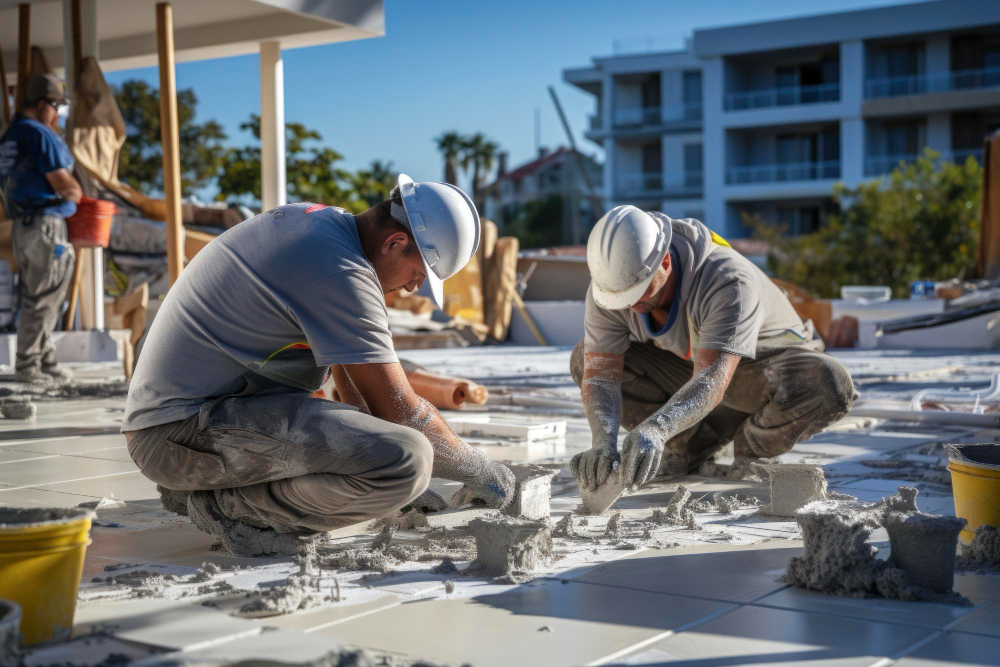
When your concrete starts to deteriorate, concrete spalling could be the culprit behind it. MJ Engineering Projects encounters various forms of concrete damage regularly, and among these, spalling is a frequent issue homeowners and strata buildings encounter with their concrete surfaces.
In this article, we’ll talk about what concrete spalling entails, its underlying causes, the detrimental effects it can have, and proactive measures to prevent it.
What is concrete spalling?
Concrete spalling is a form of damage that manifests as sections or patches of the concrete surface flaking, chipping, or peeling away. This degradation can affect small portions or even spread across entire slabs or areas.
What leads to concrete spalling?
Concrete spalling can be triggered by various factors, including the use of low-quality concrete, inadequate finishing techniques, damage caused by deicing salts, and corrosion due to exposed rebar.
Concrete is inherently porous, which makes it prone to water absorption. When temperatures go to freezing, the water within the concrete expands, causing the pores to rupture and deteriorate the surface. This initiates the cycle responsible for concrete spalling and other forms of concrete damage over time.
Why is concrete spalling a concern?
Concrete surfaces experience a gradual degradation, which leads to spalling, creating an array of openings and susceptibilities that allow water and harmful substances to permeate the concrete.
As water infiltrates and subsequently freezes, it expands, exacerbating the situation by causing more pores to form and accelerating the concrete’s deterioration. This damage accumulates over time, and once the deterioration process commences, it often worsens, particularly when subjected to repeated freeze-thaw cycles.
The relentless cycle of freeze and thaw continues to erode the structural integrity of the concrete, leading to the need for extensive repairs or replacements if left unaddressed. Therefore, proactive maintenance and protective measures are essential to mitigate the long-term consequences of concrete spalling.
How can you prevent concrete spalling?
To ensure the long-term integrity of concrete structures, it is crucial to initiate and maintain robust concrete maintenance protocols from the project’s inception. These practices play a pivotal role in preventing issues such as concrete spalling and surface-related damage.
Moreover, adhering to consistent maintenance routines is equally essential, as they can effectively mitigate and delay surface deterioration when early signs of distress surface. By focusing on proactive care and regular upkeep, concrete structures can retain their structural soundness and aesthetic appeal over an extended period, saving on potential repair costs and enhancing safety.
Concrete Cleaning and Sealing
Effective concrete maintenance involves a comprehensive cleaning process to eliminate stains, dirt, debris, and grime, followed by sealing the concrete with a high-quality penetrating sealer.
This approach significantly reduces the risk of concrete spalling and significantly extends the lifespan of your concrete, especially when applied promptly after new concrete installation.
Penetrating sealers are designed to infiltrate the concrete’s pores and trigger a chemical reaction that forms a protective barrier against moisture absorption. By preventing water from penetrating the concrete, it averts expansion during freezing conditions, thus preventing concrete spalling and surface damage.
Timely sealing of your concrete is crucial, as once damage takes hold, it can become increasingly challenging to reverse.

Unlocking Business Intelligence: Why Power BI Training is the Future of Data-Driven Success

Custom Boba Cups: How Personalization Can Boost Your Boba Tea Business

Konversky: A Complete Guide to Its Meaning, Relevance, and Impact

Accelerating drug discovery through the DEL-ML-CS approach

AI in Marketing Is No Longer a Buzzword — It’s the Strategy

How to Choose the Best Nicotine Strength for Your Vape Juice

Criminal Lawyer Ottawa: Your Ultimate Guide to Legal Defense in the Capital

What is Vaping? A Beginner’s Guide








